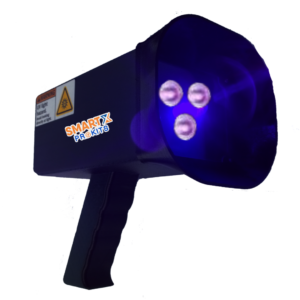Pipeline Integrity: Detecting Hydrocarbon Contamination with UV Lamps in Petrochemical Plants
Pipelines are the lifelines of the oil and gas industry, carrying massive volumes of crude oil, natural gas, and refined products. But even minor hydrocarbon leaks or contamination within these pipelines can result in serious safety hazards, costly downtime, and environmental damage. Ensuring pipeline integrity is therefore a top priority for petrochemical plants and refineries.
This is where 365 nm UV inspection lamps have become game changers. By using ultraviolet light to make hydrocarbon leaks visible, they allow maintenance teams to identify problems quickly, accurately, and before they escalate.
Contamination Risks in Oil & Gas Pipelines
Pipeline contamination or leaks can occur due to:
Corrosion: Over time, metal pipelines deteriorate, leading to leaks.
Wear & Tear: Continuous flow of petroleum products can cause micro-cracks.
Joint or Valve Failures: Weak seals may lead to undetected seepage.
External Damage: Excavation or mechanical impact often causes pipeline breaches.
Undetected leaks can trigger:
Fire & Explosion Risks from volatile hydrocarbons
Environmental Hazards due to oil spills
Production Losses from downtime and repairs
Compliance Issues with strict industry safety regulations.
How UV Inspection Spots Leaks Invisible to the Naked Eye
Traditional inspections sometimes fail to detect micro-leaks or contamination. But under 365 nm UV light, hydrocarbons fluoresce, making them instantly visible even in low-light conditions.
Benefits of UV lamps for pipeline inspections include:
High Accuracy: Detects leaks that cannot be seen in normal lighting.
Portability: Handheld, lightweight, and battery-powered for field use.
Non-Destructive Testing (NDT): Inspections are fast and don’t disrupt operations.
Wide Coverage: Effective on pipes, valves, joints, tanks, and refinery equipment.
Case Example: Refinery Pipeline Inspection
At a large petrochemical refinery in India, maintenance teams faced recurring downtime due to undetected hydrocarbon seepage in underground pipelines. By introducing portable 365 nm UV lamps, they were able to:
Identify small but critical leaks during routine checks
Prevent costly shutdowns and equipment damage
Enhance worker safety by reducing fire and exposure risks
Achieve compliance with industry safety audits
The result was a significant reduction in downtime and improved operational reliability.
Benefits for Petrochemical Plants
Enhanced Safety: Early leak detection prevents catastrophic failures.
Faster Turnaround: Reduces inspection and maintenance time, minimizing aircraft downtime.
Cost Savings: Prevents small issues from developing into expensive repairs.
Regulatory Compliance: Ensures all inspections meet stringent aviation standards.
Conclusion
In the high-stakes aviation industry, UV inspection lamps are more than just tools—they are safety essentials. By helping MRO teams detect oil, fuel, and hydraulic leaks with unmatched accuracy, 365 nm UV lamps enhance operational reliability, reduce risks, and keep aircraft compliant with safety regulations.
If you’re part of aviation maintenance or MRO operations, investing in the right NDT UV lamp can significantly improve inspection accuracy and ensure safer skies.
👉 Call to Action
Looking for a reliable handheld UV lamp for aviation maintenance? Explore our portable 365 nm NDT UV lamps designed for professional aircraft inspections. Shop Now at SmartXprokits





















